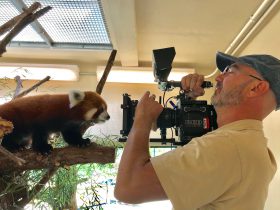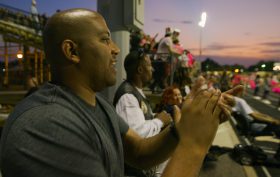Ever watched a movie or read a book and felt like it was going nowhere? Or felt like it was unfocused because of unnecessary details? That’s a plot problem.
Plot is the the structure of your story, and it’s a critical element for engaging your audience. As a storyteller, there are a couple of key decisions to be made about any story:
- Which elements to include in the story (and which ones to exclude), and
- How to arrange those elements into a clear beginning, middle, and end.
There are lots of elements in any story, and there’s not enough time to tell every detail. Your audience doesn’t have the attention span for every single detail either.
Knowing what elements to exclude from your story can be just as important as knowing what to include. To do that, you have to pull all the potential plot points together and then decide which ones are crucial to the story.
We identify the potential plot points in a pre-interview, and sometimes even the main character doesn’t realize some of the connections. The deeper we go to understand our character up front, the more we can connect those plot points and start to craft the story.
The role of conflict in storytelling
Another key thing you need in a story is conflict. Without conflict, your audience isn’t going to care about your story. There are plenty of short stories or films out there where the storyteller doesn’t discover a significant conflict, and it’s a huge oversight. Conflict is the fuel to the story’s engine!
In short stories (and short videos), there’s usually one key conflict that serves as the fuel. Conflict creates a question for the audience and gives the story direction. It shows what the heart (the main character) wants to do and what’s getting in the way. Without it, there’s no reason for the audience to keep watching.
Putting your story together
Once the plot points have been decided and you’ve identified the conflict, it’s time to put the story in order. Every story should have a beginning, middle, and end, regardless of the length of the story.
- The beginning sets up the story and helps the audience connect emotionally to the main character, also known as the heart of the story. If we miss creating that connection between character and audience, the rest of the story is a waste of time. And the shorter the story, the shorter time you have to make that connection.
- The middle is the journey toward the character’s big want or desire. The main character needs a strong desire for a good story, and this is where they go after it.
- The end is the resolution. It’s the culmination of the character’s journey. Did they get what they were going after?
In general, about 25% should be beginning, 50% middle, and 25% ending. It’s not a set rule, and sometimes it needs to be broken, but it’s been studied over and over as the structure that best keeps audiences engaged.
With the right approach to plot, combined with the right approach to people and purpose, you can be well on your way to telling a powerful, engaging story.
If you need help with storytelling on video, we’d love to chat and see if we’re a good fit for your project.
Want to learn more about storytelling? Check out Muse Storytelling!




